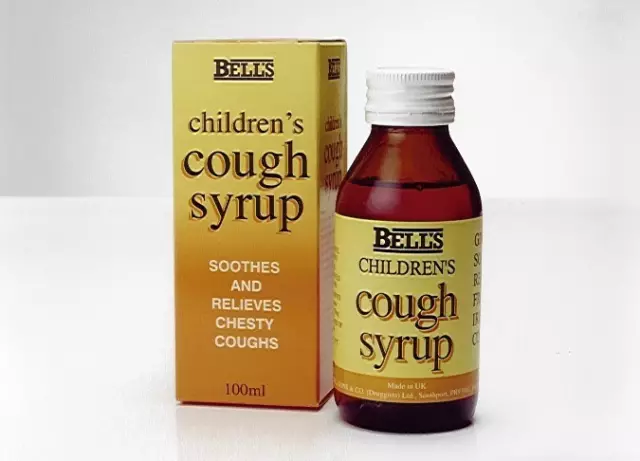- Author Rachel Wainwright [email protected].
- Public 2023-12-15 07:39.
- Last modified 2025-11-02 20:14.
Versicolor versicolor
The content of the article:
- Colored lichen causes and risk factors
- Forms of the disease
- Stages
- Symptoms
- Features of the course of multi-colored lichen in children
- Diagnostics
- Treatment of multi-colored lichen
- Possible complications and consequences
- Forecast
- Prevention
Tinea versicolor is a chronic fungal skin disease that affects the stratum corneum of the epidermis. Due to the characteristic yellowish-brown color, the damaged areas of the skin become similar to age spots, therefore, the people of the common versicolor are sometimes called "solar fungus". The disease was first described in 1853 by G. Robin, who discovered a previously unknown type of mycelial yeast-like fungi in micropreparations of a patient's skin scrapings.

The waste products of the pathogen suppress the production of melanin pigment, which causes hypopigmented areas to appear
Initially, the causative agent of multi-colored lichen was called Microsporum furfur, but later, in order to avoid mistaken associations with dermatophytes (genus Microsporum), another name was proposed - Malassezia furfur in honor of the French botanist L. Malasse, who discovered budding fungal cells in the stratum corneum of the human epidermis.
In addition to the main mycelial form of the pathogen (Malassezia furfur), two more varieties of fungi that cause versicolor versicolor have been found: round (Piturosporum orbiculare) and oval (Piturosporum ovale). All three forms are capable of transforming into each other.
Colored lichen causes and risk factors
Versicolor versicolor is caused by yeast-like fungi that are part of the normal microflora of the skin. In favorable conditions for itself, the fungus begins to multiply intensively in the mouths of the hair follicles, forming colonies in the form of yellow-brown spots. The etiology of the disease has not been finally clarified. Infection through contact with a sick person or through common household items is unlikely. The key role, apparently, is played by the suppression of immunity under the influence of a number of external and internal factors:
- hereditary predisposition;
- sweating and excess sebum production;
- the specific composition of the secretion of the skin glands;
- lack of vitamins and minerals;
- exposure to ionizing radiation;
- chronic heavy metal poisoning;
- long-term use of oral contraceptives and corticosteroids;
- skin irritation with synthetic fabrics;
- climatic factors: hot weather, high air humidity, intense insolation.

Suppression of immunity under the influence of internal and external factors plays a key role in the development of multi-colored lichen
They are also capable of provoking versicolor lichen causes of a systemic nature: neurosis, hormonal failure or a general chronic disease: tuberculosis, chronic tonsillitis, diabetes mellitus, dysfunction of the gastrointestinal tract, liver and kidneys, neoplasms and immunodeficiency states.
Forms of the disease
Versicolor versicolor is capable of flowing in two forms - local and widespread. In the first case, the manifestations of the disease are local in nature: most of the spots are concentrated in one or two places. In the second case, the lesions quickly spread to other parts of the body. The more common form is more difficult to treat.
Stages
There are three stages of the disease:
- The incubation, or latent period (lasts from two to three weeks to several months).
- Detailed clinical picture.
- Remission.
Symptoms
In the early stages, multi-colored lichen in humans is manifested by skin rashes in the form of small rounded yellowish-brown dots. As the colonies of fungi grow, large spots with scalloped edges, covered with scales, appear on the skin. The detection of small-lamellar peeling of the loosened epidermis when scraping the spots is a characteristic sign of the disease. The diameter of the isolated focus at this stage of the disease reaches one centimeter; when the spots merge, larger foci can also appear.

Pityriasis versicolor appears as a rash on the skin in the form of rounded yellowish-brown dots.
The waste products of the pathogen suppress the production of melanin pigment, which leads to a change in skin color in the affected areas and the appearance of hypopigmented areas that do not darken in the sun. Such spots can persist for a long time.
Skin lesions are characterized by clear localization. The initial elements appear on the chest, upper back, armpits, after which they begin to spread to the shoulders, abdomen and sides. In rare cases, versicolor versicolor affects the face and scalp, neck and limbs. Inflammation is usually absent; in some cases, itching is felt, sweating increases, body odor changes.
Features of the course of multi-colored lichen in children
According to statistics, versicolor versicolor in children of preschool and primary school age is rare. As a rule, the disease is accompanied by endocrine disorders, chronic infections, and autonomic disorders that cause increased sweating. The increase in morbidity in the prepubertal and pubertal periods is associated with sharp fluctuations in hormonal levels and changes in the chemical composition of sweat and sebum. It has been noticed that versicolor versicolor with an early manifestation is characterized by a more extensive distribution. Lesions of the abdomen, shoulders, limbs, and genital area are much more common in children and adolescents than in adult patients.
Diagnostics
To make a diagnosis, an experienced dermatologist only needs a visual examination of the skin and taking an anamnesis. When examining the affected skin areas under a Wood's lamp in a darkened room, the spots glow with a blue, brown or reddish-yellow light. Also, the Balzer iodine test is very informative: one of the spots is smeared with a solution of water, capturing healthy skin. With multi-colored lichen, the difference in the intensity of staining of damaged and healthy areas is clearly visible.
In order to clarify the diagnosis, microscopy of skin scrapings is performed to identify the pathogen. Since dermatomycosis often occurs against the background of various internal diseases, it is recommended to undergo a comprehensive medical examination.

The spots of multicolored lichen, when viewed under a Wood lamp, glow blue
In the course of differential diagnosis, it is necessary to exclude lichen rosacea, vitiligo and syphilitic roseola.
Treatment of multi-colored lichen
The treatment of multi-colored lichen requires an individual approach, taking into account the size, scale of distribution and localization of foci, the constitution and lifestyle of the patient, the presence of concomitant diseases, etc. The selection of a therapeutic scheme should be done by a dermatologist; self-medication is not able to provide a lasting positive result.
With the local form of multi-colored lichen, external antifungal agents based on imidazoles and triazoles are usually prescribed. To maintain the required concentration of the active substance in the dermis, it is recommended to refrain from water procedures for 12 hours after applying the drug.
The use of antifungal drugs alone in the common form of the disease is ineffective. In this case, the patient is prescribed a combined course of antifungal, drying and keratolytic agents. If no positive dynamics is observed within four weeks, treatment tactics need to be revised.

For the treatment of multi-colored lichen, antifungal agents are prescribed topically and internally
Throughout the course of therapy, it is important to adhere to the rules of personal hygiene. A daily change of linen is required, and ideally, other items of clothing. Underwear and bedding must be disinfected before washing.
Possible complications and consequences
Within two to three months after the relief of exacerbations, changes in skin pigmentation may persist.
Forecast
With timely treatment for medical help and strict adherence to the recommendations of a dermatologist, you can achieve long-term remission. On the contrary, haphazard treatment and unauthorized use of drugs aggravates the course of the disease and provokes relapses.
Prevention
The likelihood of contact infection with versicolor versicolor with the relative well-being of the immune system is negligible. However, in public places, you should not neglect the basic principles of hygiene: towels, bathrobes, slippers, underwear, hairbrush, shaving and manicure accessories should only be personal.
Prevention of exacerbations boils down to four fundamental principles:
- strengthening immunity;
- high-quality skin care;
- combating concomitant diseases;
- elimination of provoking factors.
It is especially important to avoid aggressive ultraviolet radiation and contact with skin irritating substances. It is undesirable to swim on spontaneous beaches, and sunbathing is permissible only in the morning and evening hours with the obligatory use of sunscreen with an SPF filter.
To reduce the intensity of sweating in hot weather, it is recommended to refrain from strong physical exertion, give preference to light loose clothing made from natural fabrics, regularly wipe the skin with acidified water, sprinkle with talcum powder and wash with a weak solution of alum or salicylic alcohol. Good nutrition, stress control, and a gentle daily regimen also help prolong remission.
YouTube video related to the article:

Anna Kozlova Medical journalist About the author
Education: Rostov State Medical University, specialty "General Medicine".
The information is generalized and provided for informational purposes only. At the first sign of illness, see your doctor. Self-medication is hazardous to health!






